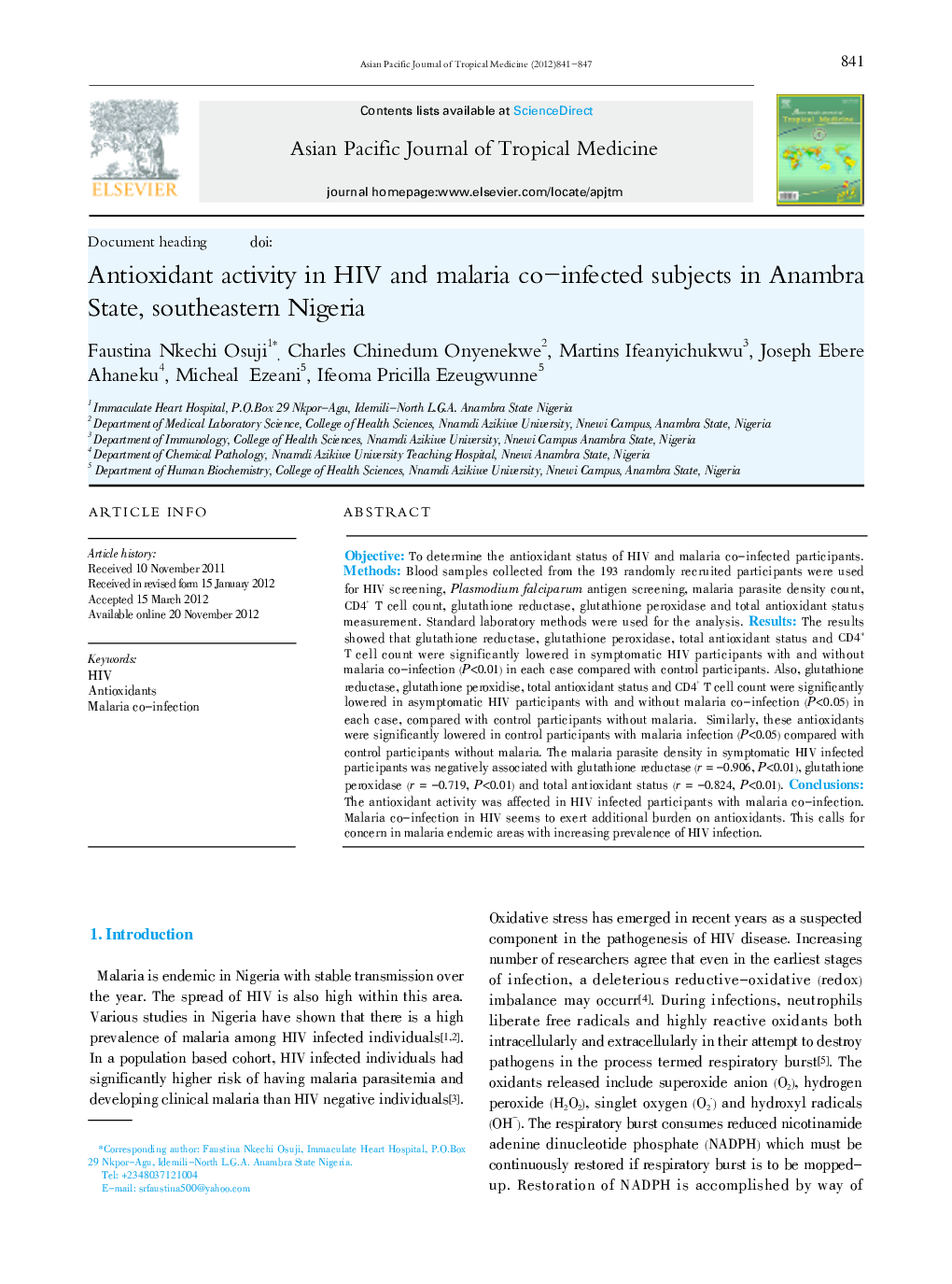| کد مقاله | کد نشریه | سال انتشار | مقاله انگلیسی | نسخه تمام متن |
|---|---|---|---|---|
| 3455998 | 1596047 | 2012 | 7 صفحه PDF | دانلود رایگان |

ObjectiveTo determine the antioxidant status of HIV and malaria co-infected participants.MethodsBlood samples collected from the 193 randomly recruited participants were used for HIV screening, Plasmodium falciparum antigen screening, malaria parasite density count, CD4+ T cell count, glutathione reductase, glutathione peroxidase and total antioxidant status measurement. Standard laboratory methods were used for the analysis.ResultsThe results showed that glutathione reductase, glutathione peroxidase, total antioxidant status and CD4+ T cell count were significantly lowered in symptomatic HIV participants with and without malaria co-infection (P<0.01) in each case compared with control participants. Also, glutathione reductase, glutathione peroxidise, total antioxidant status and CD4+ T cell count were significantly lowered in asymptomatic HIV participants with and without malaria co-infection (P<0.05) in each case, compared with control participants without malaria. Similarly, these antioxidants were significantly lowered in control participants with malaria infection (P<0.05) compared with control participants without malaria. The malaria parasite density in symptomatic HIV infected participants was negatively associated with glutathione reductase (r = −0.906, P<0.01), glutathione peroxidase (r = −0.719, P<0.01) and total antioxidant status (r = −0.824, P<0.01).ConclusionsThe antioxidant activity was affected in HIV infected participants with malaria co-infection. Malaria co-infection in HIV seems to exert additional burden on antioxidants. This calls for concern in malaria endemic areas with increasing prevalence of HIV infection.
Journal: Asian Pacific Journal of Tropical Medicine - Volume 5, Issue 11, November 2012, Pages 841-847